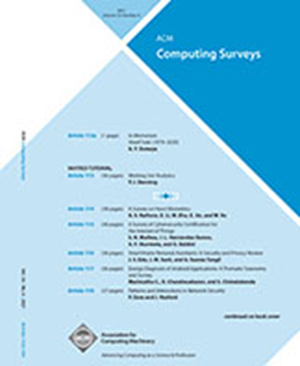Machine Learning for Infectious Disease Risk Prediction: A Survey
IF 23.8
1区 计算机科学
Q1 COMPUTER SCIENCE, THEORY & METHODS
引用次数: 0
Abstract
Infectious diseases place a heavy burden on public health worldwide. In this paper, we systematically investigate how machine learning (ML) can play an essential role in quantitatively characterizing disease transmission patterns and accurately predicting infectious disease risks. First, we introduce the background and motivation for using ML for infectious disease risk prediction. Next, we describe the development and application of various ML models for infectious disease risk prediction, categorizing them according to the models’ alignment with vital public health concerns specific to two distinct phases of infectious disease propagation: (1) the pandemic and epidemic phases (the P-E phaseS) and (2) the endemic and elimination phases (the E-E phaseS), with each presenting its own set of critical questions. Subsequently, we discuss challenges encountered when dealing with model inputs, designing task-oriented objectives, and conducting performance evaluations. We conclude with a discussion of open questions and future directions.求助全文
约1分钟内获得全文
求助全文
来源期刊

ACM Computing Surveys
工程技术-计算机:理论方法
CiteScore
33.20
自引率
0.60%
发文量
372
审稿时长
12 months
期刊介绍:
ACM Computing Surveys is an academic journal that focuses on publishing surveys and tutorials on various areas of computing research and practice. The journal aims to provide comprehensive and easily understandable articles that guide readers through the literature and help them understand topics outside their specialties. In terms of impact, CSUR has a high reputation with a 2022 Impact Factor of 16.6. It is ranked 3rd out of 111 journals in the field of Computer Science Theory & Methods.
ACM Computing Surveys is indexed and abstracted in various services, including AI2 Semantic Scholar, Baidu, Clarivate/ISI: JCR, CNKI, DeepDyve, DTU, EBSCO: EDS/HOST, and IET Inspec, among others.
 求助内容:
求助内容: 应助结果提醒方式:
应助结果提醒方式:


